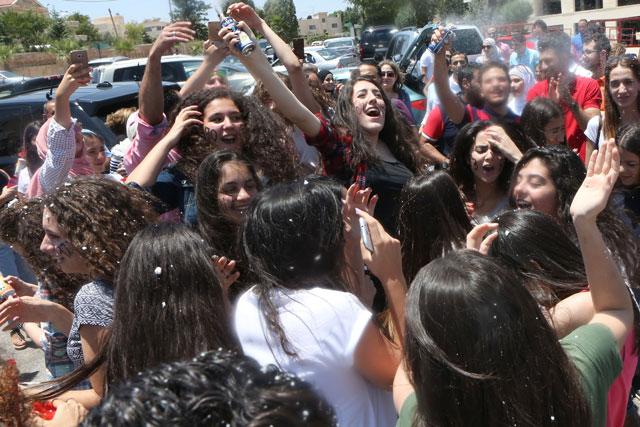You are here
‘Jordan’s illiteracy rate, at 9.1%, remains among lowest in region’
By Laila Azzeh - Feb 22,2016 - Last updated at Feb 22,2016
AMMAN — Jordan’s illiteracy rate remains among the lowest in the Arab world, with 9.1 per cent of residents aged above 13 classified as illiterate, according to the 2015 Population Census.
The survey showed that the illiteracy rate varies between citizens and non-Jordanians, standing at 6.7 per cent and 14.5 per cent respectively.
The census also revealed that the vast majority of Jordanian children (95 per cent) between the ages of 6 and 15 are enrolled in schools.
Seven out of ten Syrian children in the same age bracket go to school, with a slight increase among girls.
As for secondary education, 7 out of every 10 Jordanians between the ages of 16 and 18 go to school, while girls outweighed boys in this department by 8 per cent.
The secondary school enrolment rate drops drastically among Syrians, with only 2 out of every 10 boys and 3 out of every 10 girls enrolled in school at this level.
As for university, 3 out of 10 Jordanian boys and 4 out of 10 Jordanian girls between the ages of 19 and 23 are enrolled in universities.
A “small” percentage of Syrians go to universities, standing at 13.3 per cent.
At the pre-school stage, half of Jordanian children aged four to five go to kindergarten, compared to only 2 out of 10 Syrians of the same age.
The census also revealed that 87 per cent of those enrolled in government-run educational institutes are Jordanians, while 22 per cent are non-Jordanians.
On the other hand, non-Jordanians in private institutions make up 28 per cent, while non-Jordanians enrolled in UNRWA schools constitute 46 per cent.
When it comes to gender differences, the census revealed that males constitute 51 per cent of overall education enrolment, except at the secondary level, while the vast majority of vocational trainees (86 per cent) are men.
Furthermore, there is one female for every three male PhD holders.
Educational status indicators for non-Jordanians were similar to those among citizens, but non-Jordanian women were revealed to have more vocational training compared to their Jordanian peers.
Related Articles
AMMAN — The latest population census has revealed that the Kingdom's population has almost doubled over the past decade, according to offici
AMMAN — Jordan marks World Population Day on Monday, which is held this year under the theme “investing in teenage girls”, the Department of
AMMAN — Public schools made a strong showing in the General Secondary Education Certificate Examination’s (Tawjihi) summer session, with sev














